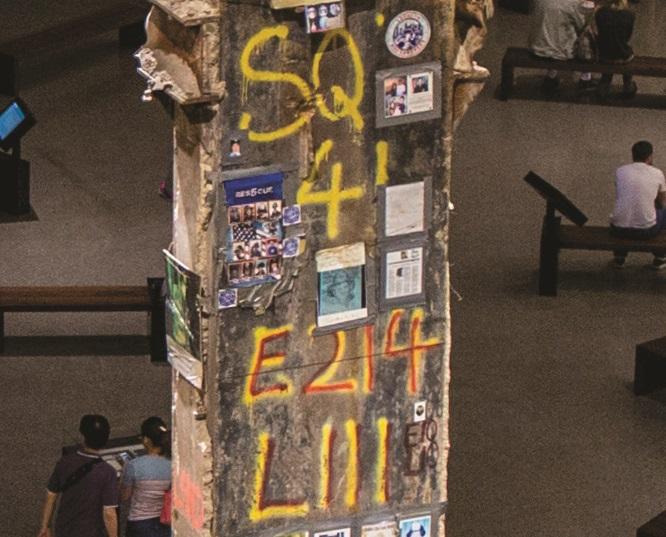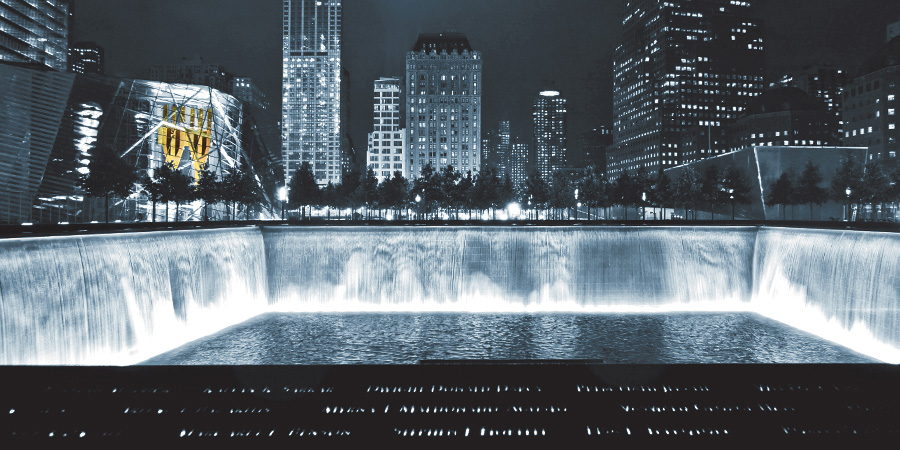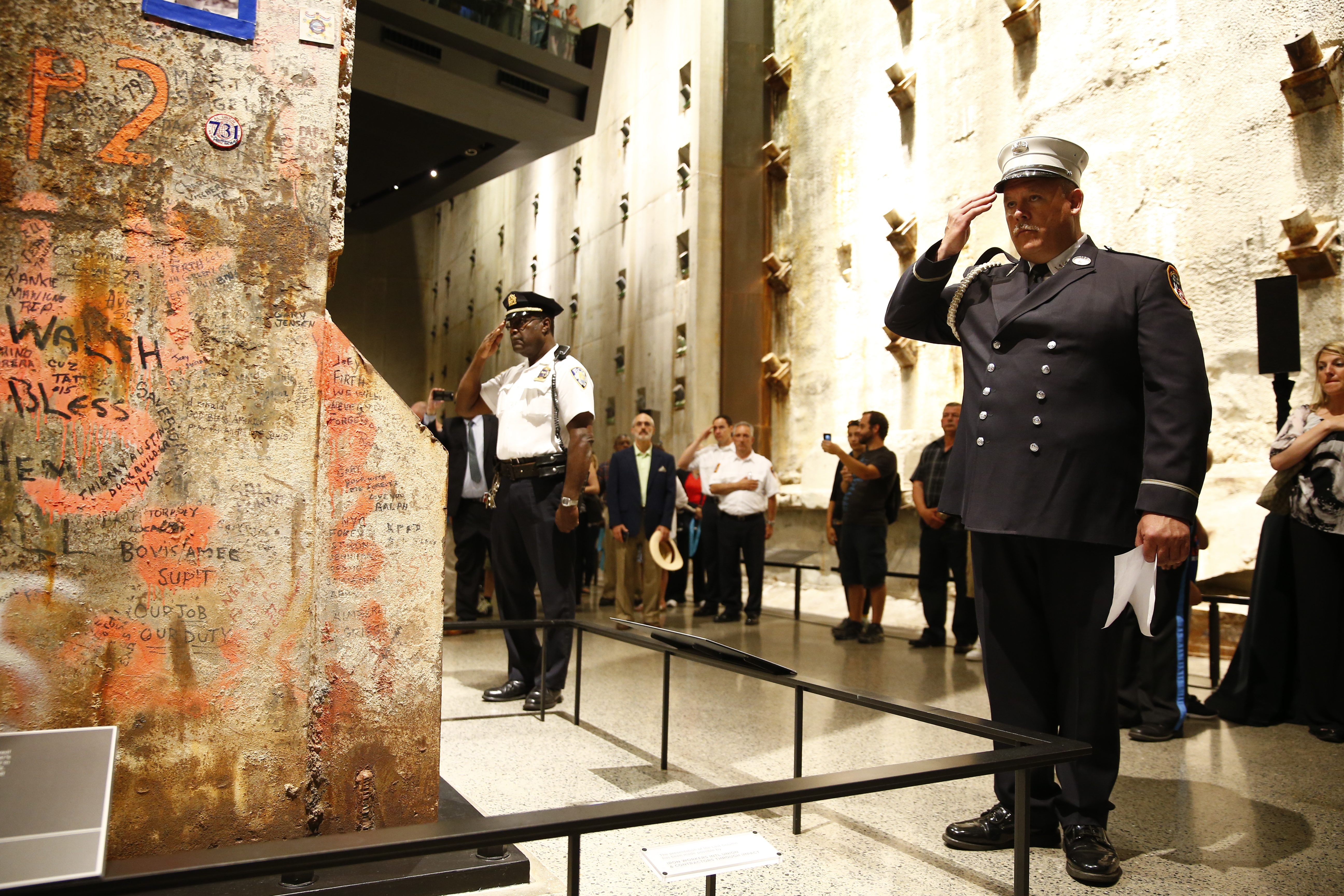Story Behind the Last Column’s First Markings
Story Behind the Last Column’s First Markings

The Last Column, standing in the center of the 9/11 Memorial Museum’s Foundation Hall, is covered in thousands of markings and tributes placed on the beam by workers and family members. The story of how and why the markings began to appear links back to one fireman’s personal and practical act.
George Luis Torres, FDNY Squad 41, began searching for survivors of Sept. 11. and worked intermittently at ground zero for the duration of the rescue and recovery effort. He and fellow squad members were looking for the six men from their unit who were missing.
“You do what you gotta do to bring everybody back,” he said. “This wasn’t Iraq and it wasn’t Afghanistan but at the same time that was our war, right there, that was ground zero.”
In March 2002, just before St. Patrick’s Day, a tool marked by Squad 41 was found near the temporary Tully Road at the southeast portion of ground zero. Taking this as evidence that their men may be recovered there, they made a mental note to return to that area once the recovery progressed and that area could be accessed.
As the pile got lower, it proved harder for Torres to keep track of the beam where he hoped the Squad 41 members would be found. Torres asked Brian Lyons, a construction manager on site and the brother of fellow Squad 41 Firefighter Michael Lyons missing since 9/11, to help him mark the location on an exposed beam.
They sprayed SQ 41 in yellow paint on the column to indicate the exact spot where they located traces of their men. He was also requested to spray E 214 and L 111 by other recovery workers nearby.
The next day, Torres received several calls from senior officers at the firehouse, stating that they had received disgruntled reports that he had defaced the column with graffiti. Torres explained that he was not trying to be disrespectful but rather to mark where their squad members appeared to have been found. Within 24 hours the column was covered with other unit identifications and the initial attachments of memorial tributes that would grow over the next few months.
Ultimately this beam became known as “The Last Column” and became a symbol of loss, remembrance and of the community at ground zero and was ceremoniously removed from the site on May 30, 2002, to mark the end of the recovery effort. The beam returned to the 9/11 Museum in 2009.
By Jenny Pachucki, 9/11 Memorial Content Strategist
Previous Post
Museum Marks 2nd Anniversary, Welcomes 5.6 Million Visitors

Tomorrow marks the second anniversary of the day the 9/11 Memorial Museum opened its doors to the public.
Next Post
The Lens: Capturing Life and Events at the 9/11 Memorial and Museum

The Lens: Capturing Life and Events at the 9/11 Memorial and Museum is a photography series devoted to documenting moments big and small that unfold at the 9/11 Memorial and Museum.